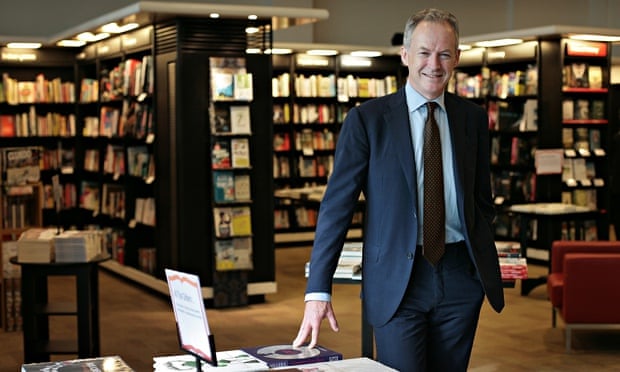JIMI HENDRIX
Johnny
Allen Hendrix was born on November 27, 1942 in Seattle ,Washington and died on September 18, 1970 in the London Borough of
Kennsington in the heart of London from reputedly a drugs overdose.
Jane
Austen was born in Steventon Hampshire on the 16th December
1775 – and died in Winchester on the 18th July 1817 reputdly from a
disease called Addisons disease, a
problem with the immune system, which causes it to attack the outer layer of
the adrenal gland (the adrenal cortex), disrupting production of steroid
hormones aldosterone and cortisol eventually causing the break down of the immune system.
Not an unsimilar affect to Hendrix’s overdose. In both cases their bodies
stopped. . One hundred and sixty
nine years separated their births. What if these two geniuses had ever met?
JANE AUSTEN
They
both spent time in London and enjoyed the metropolis and this might appear at
first their only connection. However, Hendrix had a great respect
and affinity with the 18th century, especially in the person of the German Composer, who emigrated to England
,George Frederick Handel, who like Hendrix, came to London for
fame and fortune. Hendrix loved The Messiah and Handels Water Music. Hendrix
was a gatherer of all sorts of music which he then assimilated through his own
creative mind into new and exciting compositions. He did it with the Beatles
Sergeant Peppers anthem and also the "sacred", Star Spangled Banner which he
reinvented in his own style at the Woodstock Festival and gave it meaning to a
new generation. Then of course there were his own original compositions made
about life’s many ,”Experiences.”
In
comparing Jane Austens compositons with those of Jimi Hendrix,Cross Town Traffic, for instance, has connections with Austen’s Northangar Abbey, The Gods Made Love, is
comparable to the love of Elizabeth Bennet and Fitzwilliam Darcy. Hendrix
wrote ,Little Miss Strange, and of course Austen had a few strange ladies
portrayed in her novels, Fanny Price and Emma Woodhouse for two. Hendrix was
concerned with money matters, homes and relationships just as Austen was.
There are many ideas and themes shared by the two. In many cases the same
sentiments were expressed by both.
So
one day, let us say, Jimi Hendrix was walking along The Strand towards
The Royal Courts of Justice. The reason, let
me reassure you, a mere matter of a minor smoking misdemeanour and possession of a very small amount of cannibus. Who should
be advancing towards him from the other direction but Miss Jane Austen herself
on the way to pay her tea bill at Twinings, also on The Strand.
JH.
Hey is that you Jane? Great to see you girl.
JA. Hello Mr Hendrix and how are you faring?
J.H. I've been reading the lyrics of that amazing dude Bob Dylan, man?
J.A. Mr Dylan? I do not recall that gentleman.
J.H. I love Dylan, man. I met him once, back at the WHA club on MacDougal Street in New York.
JA Ah New York, named after that most
delightful of Yorkshire cities. Such a shame it is no longer within the power
of this realm.
JH. Yeh cool,Jane. Peace to all
men.I hate war. Doods die man.When I met Dylan I
think both of us were pretty cosmic at the time. Our minds were with the stars. Do you dig? Hey, hows things with you?
Where are you hanging out now girl? What you doin' in London Jane?
JA It is so delightful to see you again Mr
Hendrix. I am here visiting my brother Henry, who lives a few hundred paces from this very spot, in Henrietta Street. However, ordinarily,I am living
with my mother, such a nuisance, but that is by the by and my sister in-law
in Southampton along with my best friend Martha. Martha is such a problem.
She chases after vicars you know. There is a Dr Mant in Southampton she
just will not leave alone whatever I say to her and no matter how much I implore
her. I tell her it will all end in tears.
JH. Check that sis, hee hee hee. It’s the
other way with me girl. I’m the one chasin the chicks round here. You dig!!
But hey Jane Hennrietta Street, Its so cool. I really dig those street musicians in Covent Garden. I get inspiration for my song
writing in places like that. Real cool man.
JA We hope to visit the theatre while we
are here. I know Kean is performing in Lear.By the way,I do like your miltary
attire Mr Hendrix. I didn't know you were a military person. You quite remind
me of my dear brothers . They look smart too in their Royal Naval uniforms.If I
recall we met at The Marquee Club in Soho last was it not? A gentleman
most proficient on the guitar was playing, a rather strident number if I
remember, called ."White Room." Mr Eric Clapton I think. He certainly played a
virtuoso performance displaying much passion.I could feel my cheeks quite blush
at all the energy he manifested in his bodily movements. His suggestion of a, "white room with black curtains," has quite influenced us all in Castle Square as
to our choice of décor. My ears didn't stop ringing for days.
JH. I got blacked out windows in my pad too. I need head space. Time to
think. Time to create man. I live next to where that dude Handel lived. He
was some musician.You, ever checked out his stuff?
JA Yes, I have heard Mr Handels Messiah performed in St Pauls Cathedral. A most exhilarating experience. I sang
so heartily with the chorus. I don’t like to complain but I must say, Mr
Hendrix, our house in Southampton is such a bother. The first man we hired to look after our garden was, in your parlance Mr Hendrix, not a cool cat.Our garden is now putting in order by a man who bears a
remarkably good character, has a very fine complexion, and asks something less
than the first. The
shrubs which border the gravel walk, he says, are only sweetbriar and roses,
and the latter of an indifferent sort; we mean to get a few of a better kind,
therefore, and at my own particular desire he procures us some syringas. We talk also of
a laburnum. The border under the terrace wall is clearing away to receive
currants and gooseberry bushes, and a spot is found very proper for raspberries.
JH Hey Jane that sounds cool . Gardens are pretty neat. I love the smell of flowers. I love inhaling. My idea of a garden would be to have a swimming pool. I want to get up in the morning and just roll out of bed into a swimming pool. Swimming in a cool pool followed by some chic giving me a massage. Woo! I can just see it now.
JA A
swimming pool? I don’t think I have ever heard of one of those. It sounds very
interesting.Is it like the baths in Bath? As
far as the inside of our house goes the alterations and improvements advance very properly, and will be made very
convenient indeed. Our dressing table is being constructed out of a
large kitchen table belonging to the house. We have the
permission of Mr. Husket, Lord Lansdown's painter -- domestic painter, I should
call him. Domestic chaplains have given way to this
more necessary office, and I suppose whenever the walls require no touching up he
is employed about my lady's face.
JH.
Hey Jane I love your wit. I could do with a bit of that
in my songwriting. I can just see the painter doing things to my lady.
JA
May I
ask, how is your latest musical endeavor proceeding Mr Hendrix? I must come
and hear you when you next perform. I enjoyed the conflagration you started
when you set your guitar alight last time I was at The Bag o Nails club, I
think that was the place in SOHO? All that consternation and screaming. I
wish we had balls like that in Southampton and Bath. It was all so,
humerous and enlightening. Such fun.
JH I’m
writng a number called Little Miss Strange.Its goin on my new album Electric
Ladyland..
JA Oh
Mr Hendrix I do like that title. Electric Ladyland. All my novels have ladys in
them who wish to acquire lands. I am not sure I understand the term electric
though. You must tell me some time over a ,"joint." That, is, what you called
that stick of twisted paper with brown leaves inside, that I
smoked with you? I really thought you were going to set me alight like you set
your guitar alight. Ha! Ha!However, it did make me feel so good. I felt quite giddy
and skittish. I went home afterwards and wrote a scene in my novel, Northangar
Abbey. The heroine, Catherine Moorland, begins to imagine
all sorts of terrible things. I don’t think I could have created that
scene without the profound influences that seemed to overcome my whole being smoking
that ,"joint." What an unusual name, ,"joint."
JH. I’ve just remembered. I’m looking for pretty girls to appear on the album
cover of Electric Ladyland. Jane. Would you like to pose?
JA Oh
Mr Hendrix, pose, I do not pose.But thank you anyway. I shall look forward to
seeing the cover though. It is a great delight to have met you once
again. I do hope we shall meet again soon. Perhaps, as I said, at another of
your concerts. Next time do refrain from smashing your guitar into the stage.
You did look so aggressive and I know you are not at all like that.Such a sweet
man.. I could almost write you into one of my novels. Now do keep the flaming
guitar though. That is so jolly and of course warming to the senses and the excitement
it causes is so great. What, is that you do, by the way, with your instrument sticking up from between your legs? You look so excited as you seem to polish the shaft.I really must go now.I have to get to Twinings before he
closes.
JH I
dig that Jane.
Oh, my
mind is so mixed up, goin' round 'n' round_
Must there be all these colors without names,
without sounds?
My heart burns with feelin' but
Oh! but my mind is cold and reeling.
Is this love, baby
or is it confusion?
JA Oh
Mr Hendrix, you are a one. I must go Mr Hendrix, Goodbye.
And so
our two geniuses part. One to pay a fine for drugs possession and the other to
pay a bill for tea,
As
Jane crosses the road to Twinings door she mutters in a distracted sort of way.
JA
Born Under A Bad Sign,
Been down since I began to crawl
If it wasn't for bad luck
Wouldn't have no luck at all
Oh my
goodness. Now where did that come from? It just popped into my head.I
must tell Mr Hendrix about it next time I see him.
references:
The Official Jimi Hendrix website: http://www.jimihendrix.com/us/home
Guitar World Jimi
Hendrix's Final Interview from September 11, 1970
Rolling Stone 1969 Sheila
Weller interview with Jimi Hendrix
Jane Austens letters
Collected and Edited by Deirdre Le Faye
Emma by Jane Austen
(Penguin Classics)
Northangar Abbey by Jane Austen
(Penguin Classics)
Mansfield park by Jane Austen
(Penguin Classics)
Pride and Prejudice by Jane
Austen (Penguin Classics)
Persuasion by Jane Austen
(Penguin Classics)
Sense and Sensibillity by Jane
Austen (Penguin classics)




































